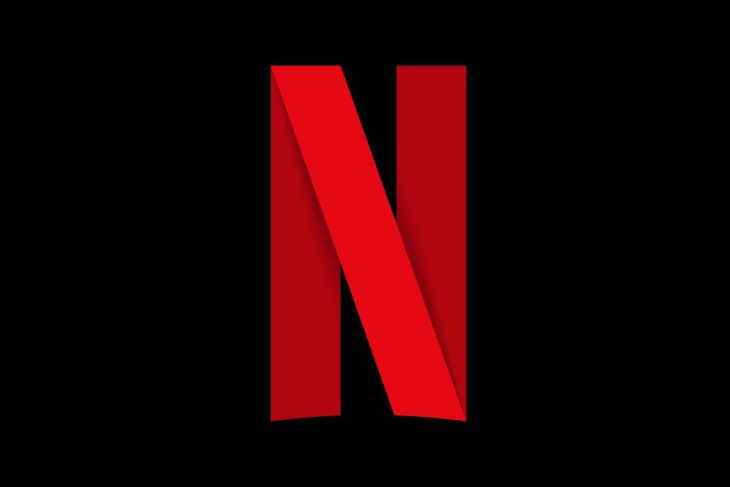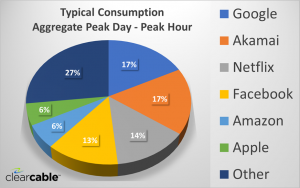
By Greg O’Brien
A DAY AFTER A group of independent network operators publicly appealed to streamers Netflix and Amazon to help with the traffic congestion problems resulting from millions of Canadians now being home and online during the day due to the Covid-19 crisis, Netflix responded and said it will implement a move to cut its traffic by 25%.
That said, Cartt.ca has also learned some of the large ISPs were also quietly asking Netflix for help – and had engaged the federal government to try and influence the California-based streamer, too. Earlier this week we asked Minister of Innovation, Science and Industry Navdeep Bains’ office whether or not federal government officials were talking to Netflix on this front.
“Canadians benefit from some of the best networks in the world, and we are working with providers to assess a variety of needs including network capacity,” responded Bains press secretary Veronique Simard in an email earlier this week. When pressed if the government was urging Netflix specifically to act as it had in Europe, she responded “We are in touch with industry partners across all sectors.”
Whatever was the catalyst, Netflix chose to help out on Thursday.
UPDATE: While Netflix, and now Google and Bell Media’s Crave, have lowered bitrates in order to decrease the demands being placed on Canadian broadband networks – which appear to be holding strong despite the increased traffic, both downstream and upstream – just tackling one or two bandwidth-hungry video services is unlikely to provide enough relief for some networks, or areas of networks, that need upgrades, said Rob McCann founder of Clearcable, Hamilton, Ont. Clearcable runs broadband networks for many independent tier II carriers in North America.
While there surely have been spikes in traffic across all networks, McCann says his company is seeing an average 25% increase in traffic on the broadband networks it manages (see above illustration from Clearcable). In general, carriers of all size should be able to handle most of this, but this surge has revealed there are some bottlenecks in networks which were performing just fine three weeks ago – with 25% less traffic. If certain carriers or certain neighbourhoods or nodes within a carrier’s network were nearing capacity before this traffic surge, those spots are in trouble and likely won’t be helped much by Netflix’s move.
While network operators are generally able to add capacity on the transit side (from the Internet to the network core) with an email or phone call, struggles on the access side are far more difficult to quickly address because that involves physical work on the plant.
At least, as Netflix has grown, the stress it places on networks has changed. Its streams will already adapt dynamically to available bandwidth, for example. This is why video streams will sometimes look blurry or pixelated as the stream tries to maintain itself even if network bandwidth is constrained.
Plus, Netflix has rolled out many thousands of OCAs, or open connect appliances, to various big network operators so that its most popular content can be cached within ISP networks – so that its impact on the transit side is far less. It means also that if there are bandwidth issues on the access side, it probably isn’t Netflix’s fault.
“We have one service provider in the U.S. where the traffic that comes over the internet from Netflix is almost zero, because everyone is watching stuff that is on the Netflix cache in their headend.” – Rob McCann, Clearcable
So Netflix’s network footprint, despite its growing popularity, is smaller than many think. “We have one service provider in the U.S. where the traffic that comes over the internet from Netflix is almost zero, because everyone is watching stuff that is on the Netflix cache in their headend,” added McCann.
“For quite some time, we’ve observed the influence of Netflix as the major driver of traffic across networks has diminished,” he continued. “We tend to see in most markets today that 90% of the traffic is driven by the Top Ten sources in that specific market (see Clearcable illustration for the man drivers). The Top Ten is different from market to market, but we observe the common recurrence of  a specific six often referred to as FAAANG – Facebook, Apple, Akamai, Amazon, Netflix, and Google,” he added.
a specific six often referred to as FAAANG – Facebook, Apple, Akamai, Amazon, Netflix, and Google,” he added.
“Together, these sources regularly account for almost three quarters of the traffic during peak day peak time. In a representative cross section of geographies we would expect to see Google and Akamai sharing the top spot around 17% each, Netflix and Facebook contending for the next spot between 13-14%, and Amazon and Apple accounting for roughly 6% each.”
Back to Netflix. “Given the crisis, we’ve developed a way to reduce Netflix’s traffic on telecommunications networks by 25% while also maintaining the quality of our service,” said Ken Florance, vice-president of content delivery in a statement to Cartt.ca. “So consumers should continue to get the quality that comes with their plan – whether it’s Ultra-High, High or Standard Definition. We believe that this will provide significant relief to congested networks and will be deploying it in Canada for the next 30 days.”
After politicians and network operators in Europe complained last week that the sudden influx of Netflix streaming at all hours, combined with a dramatic increase in bandwidth-hungry applications like video conferencing as people work from home, was taxing their networks to the limit, Netflix made the same change there. Google and Facebook also took action there, lowering bit rates.
In a blog post last week explaining why Netflix decided on this technical fix over others, Florance wrote “different ISPs around the world have built their networks in different ways, and operate within different constraints. For example, building a residential ISP network in a dense metropolitan area is quite a different prospect from building a residential ISP network in a sparsely populated rural area. Some ISPs build their networks with a substantial amount of excess capacity (“headroom”) others do not. Fortunately, we have a lot of experience delivering Netflix efficiently through our Open Connect program – as well as other technologies we’ve pioneered – and so we can respond to these different scenarios quickly.”
The company typically has many different streams for a single title within each resolution and what the company chose to do today was to remove the highest bandwidth streams from its service through to April 26th.
Customers who are serious videophiles and highly sensitive to video quality may detect a slight decrease in resolution, but those just binging Friends reruns likely won’t notice a thing. The company promises customers will still get the video quality they pay for.
The move, said Netflix, reduces its load on the network by 25% without resorting to moving everyone to SD, something which would certainly cause Netflix some billing headaches as its Ultra HD tier is $16.99/month versus $9.99 for SD.
All that said, “The better answer is Netflix should start peering at the Toronto Internet Exchange and make more caches available,” added McCann. “If Netflix would peer with Torix (where most Canadian network operators peer, except Bell), that would solve a lot of the issues identified.”


